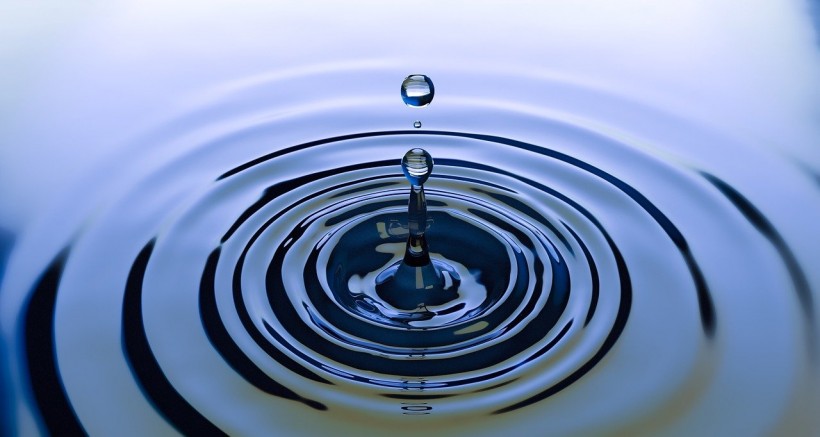We all depend on water for survival. But we sometimes take it for granted or think that our local government is making sure that we are safe. Well, I'm here to tell you that isn't always the case.
Water contamination is a serious issue because unsafe levels of lead, fluoride, and other harmful chemicals are present in our drinking water. Even though there have been many efforts to ensure its cleanliness over the last several years, water supplies continue to be contaminated by substances.
What is Water Contamination?
Water contamination is the introduction of harmful substances into the environment. It is usually through human activity, and contamination can be caused by natural processes. That's why freshwater resources are so important.
Water contamination is a global problem. It affects millions of people around the world, not just in developing or underdeveloped countries but also in some developed nations as well. It has been estimated that every year approximately 1 billion people fall ill from drinking contaminated water, which results in 4 million deaths.
Some might say that it doesn't matter if you drink clean water because your body will filter out everything toxic anyway. However, this is not true since our bodies cannot filter out all toxins, and many end up accumulating over time. It causes serious health problems such as kidney failure or cancer, among others.
Also, many different types of contaminants cannot be filtered out by a standard household filter system. Therefore, it requires more sophisticated techniques.
Lead and Fluoride in Water
-
Lead - To test for lead in your water, you can use a home testing kit from your local hardware store. These kits should be easy to use and will allow you to get an accurate reading at home. If the results come back positive, it may be time to contact a plumber or hire someone who specializes in plumbing repairs for help.
-
Fluoride - Testing for fluoride is much easier than testing for lead because there are several different options available on Amazon that do not require any sort of professional training or certification. You can also purchase these kits at most major grocery stores or drug stores, such as CVS and Walgreens, if you prefer these locations over online shopping sites.
You may have concerns about either of these contaminants being present in your water supply. It's best advised that they should be removed before using any kind of filter system such as reverse osmosis (RO). This can be done by installing an activated carbon filter on top of all other types of filters like RO membranes or sediment filters (which we'll discuss next).
Chemicals, Bacteria, and Heavy Metals in Water
The water you drink can be contaminated with a variety of chemicals, bacteria, and heavy metals. These contaminants can cause health issues for you and your family. Chemicals that have been found in drinking water include:
-
Pesticides
-
Gasoline
-
Cleaning products
-
Fertilizer and other agricultural runoff (from fields where food crops are grown)
-
Industrial waste (from factories or manufacturing)
-
Radioactive material (from nuclear energy facilities)
-
Pharmaceuticals, taken by people into the sewer system via their urine or fecal matter
-
Human waste from hospitals and prisons across the country
Bacteria like E. Coli Salmonella are also common contaminants found in many U.S. municipal water supplies. They can cause severe diarrhea and vomiting symptoms that may lead to dehydration if left untreated. Finally, there are heavy metals like arsenic and lead mercury. If these are ingested over long periods could cause cancer or other serious diseases such as kidney failure!
The Dangers of Chlorine
There is a lot of controversy around chlorine. It's used in water systems to disinfect water, but it also has many harmful effects on the human body. The EPA says that chlorine is a toxic chemical and can have negative effects on your health if you ingest or inhale too much of it.
Chlorine is also known as an irritant, which means it causes irritation on your skin and in your respiratory tract when you come into contact with it. The most common symptom of chlorine exposure is an irritated throat or lungs.
How Can We Solve This Problem?
If you live in a place where water contamination is a concern, here are some steps you can take to ensure that the water doesn't get into your system:
-
Install a filter on your faucet. This is an affordable option that will help keep out small particles as well as some chemicals.
-
Don't use tap water for drinking or cooking. Bottled water is an easy alternative for these purposes, but make sure it's not just one of those cheap brands from China!
-
Don't bathe using tap water either, at least until we know what's going on here! If possible, try using filtered showerheads instead.
Water Contamination Lawsuits
Water contamination lawsuits are a way to hold polluters accountable for contaminating your water. The first step in these cases is proving that the pollution caused damages, which may include medical bills and lost wages.
If you can prove this, then you'll need to show that the polluter should be held responsible. This means identifying where they might have been negligent in their actions and whether they broke any laws while doing so. A good reference can be the Camp Lejeune Water Contamination Lawsuit. It can give you a fair idea about the prevailing practices.
Once you've figured out who exactly was at fault and how much they should pay, you may want to consider filing a lawsuit against them as well. A successful lawsuit could win you compensation for all of these damages!
There are risks involved with suing someone over pollution issues like this. There may be an argument about who caused it or whether something qualifies as "pollution" at all (something we'll talk about more later).
Take Care of Your Water Supply
Take care of it. Drink water from a clean, sealed container. Don't leave anything sitting in water for more than two hours. If you've left a glass of water out for an hour or two, it's probably fine. However, don't keep it there for any longer than that, especially not overnight!
This is especially true if you live in a warmer climate where bacteria grow faster (like Florida). They'll be multiplying while the bottle sits outside or in your car or something like that.
Don't add anything to your already drinkable bottled water. This includes ice cubes and lemon slices, no matter how fresh-tasting they may be! Also, avoid adding salt to increase flavor.
Some people think this makes the flavor better, but actually, all that does is increase sodium levels. It can lead to high blood pressure over time.
Conclusion
We hope you've learned a lot about water preservation and the steps that can be taken to preserve our water for future generations. Water is a precious resource, after all. We must start taking action now before it's too late.
As mentioned earlier, there are many ways you can help protect our planet by reducing your carbon footprint or preserving natural resources like water. Keep reading blog posts on these topics as they become available so you can stay informed!
© 2024 NatureWorldNews.com All rights reserved. Do not reproduce without permission.
* This is a contributed article and this content does not necessarily represent the views of natureworldnews.com





![Chimpanzee Behavior: Chimp Wars Show That Murder and Violence are Not Exclusive to Humans [Report]](https://1471793142.rsc.cdn77.org/data/thumbs/full/70473/280/157/50/40/chimpanzee-behavior-chimp-wars-show-that-murder-and-violence-are-not-exclusive-to-humans-report.jpg)
